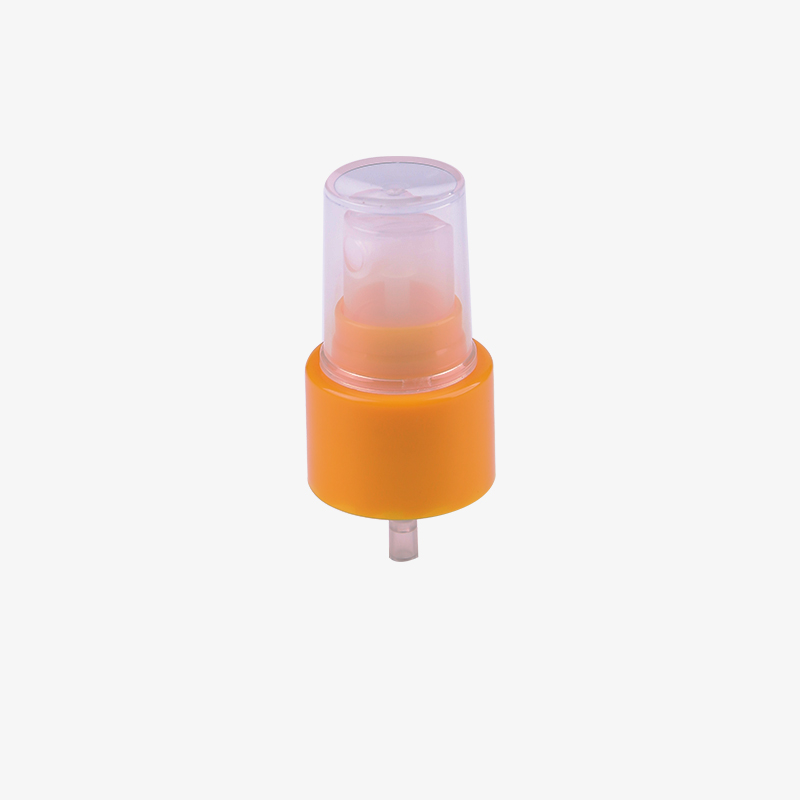Spray pump, also known as sprayer, spray pump is the main supporting product of cosmetic packaging container and one of the content distributors. Spray pump is a high-speed flowing liquid that uses the principle of atmospheric balance to spray the liquid in the bottle by pressing. It will also drive the gas flow near the nozzle mouth, so that the speed of the gas near the nozzle mouth increases, the pressure decreases, and a local negative pressure area is formed.
The structure of the spray pump:
1. Main parts of spray pump
Conventional spray pumps are mainly composed of spray pump head, diffuser nozzle, central conduit, lock cover, gasket, piston core, piston, spring, pump body, suction pipe and other accessories. The piston is an open piston, which is connected with the piston seat to achieve When the compression rod moves upwards, the pump body opens to the outside, and when it moves upwards, the working chamber is closed. According to the structural design requirements of different pumps, the relevant accessories will be different, but the principle and the final purpose are the same.
2. The principle of spray pump water
Exhaust process: Assuming that there is no liquid in the base working chamber in the initial state. Press the pressing head, the compression rod drives the piston, the piston pushes the piston seat down, the spring is compressed, the volume in the working chamber is compressed, the air pressure increases, and the water stop valve seals the upper port of the water draining pipe. Since the piston and the piston seat are not completely closed, the gas squeezes the gap between the piston and the piston seat to separate them and the gas escapes.
Water absorption process: After exhausting, release the pressing head, the compressed spring is released, push the piston seat up, the gap between the piston seat and the piston is closed, and push the piston and the compression rod to move up together. The volume in the working chamber increases, the air pressure decreases, and it is close to a vacuum, so that the water stop valve opens the air pressure above the liquid level in the container and presses the liquid into the pump body to complete the water absorption process.
Water outlet process: The principle is the same as the exhaust process. The difference is that at this time, the pump body has been filled with liquid. When the pressing head is pressed, on the one hand, the water stop valve seals the upper end of the drain pipe to prevent the liquid from returning to the container from the drain pipe; on the other hand, because the liquid is squeezed, the liquid will flush out the gap between the piston and the piston seat , into the compression tube. and come out of the nozzle
3. The atomization principle of the spray pump head (basic rules)
Since the nozzle mouth is small, if the pressure is smooth, when the liquid flows out of the small hole, the liquid flow rate is very large, that is to say, the air at this time has a large flow rate relative to the liquid, which is equivalent to the problem of high-speed airflow impacting water droplets. Therefore, the subsequent atomization principle analysis is exactly the same as that of the ball pressure nozzle. The air impacts the large water droplets into small water droplets, and the water droplets are refined step by step. At the same time, the high-speed flowing liquid will also drive the gas flow near the nozzle orifice, so that the speed of the gas near the nozzle orifice increases, the pressure decreases, and a local negative pressure area is formed. Therefore, the surrounding air is mixed into the liquid to form a gas-liquid mixture, and the liquid has an atomization effect.





 英语
英语 中文简体
中文简体










